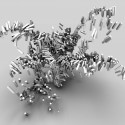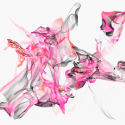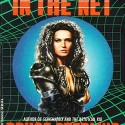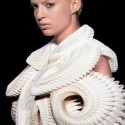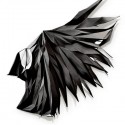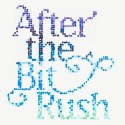17\10\2011
Written by Maxi

After the Bit Rush

The digital revolution, the great Bit Rush, is over. The question whether something is analogue or digital does not matter anymore. Everything we do is influenced by digital technology. Just as air and water, the property of being digital is only noticed when it is not there, not when it is there.
However, the way in which this post-digital world is translating itself in our daily lives is not unequivocal; certainly not now that the digital is beginning to migrate from the screen to the real world of physical objects that surround us. To many of us, the digital may already have become as essential as breathing, but how this breathing takes shape in the post-digital world is still unclear.

How do you integrate the digital, the screen, the computer and the internet with the physical world? What role could designers play in this field? MU, in collaboration with Lucas Maassen and Unfold, takes up the challenge with ‘After the Bit Rush. Design in a Post Digital Age’.
In cooperation with STRP Festival and TU/e Industrial Design department, and in the context of this exhibition, MU is organizing a symposium to be held on Friday, November 25 in the Klokgebouw at Strijp–S in Eindhoven.
One of the keynote speakers of this symposium is the American science fiction writer Bruce Sterling. Best known for his awarded novel Islands in the Net and his work on the Mirrorshades: The Cyberpunk Anthology, Sterling helped define the cyberpunk genre. Since 2003 he’s Professor of Internet Studies at the European Graduate School in Saas-Fee, Switzerland. Laura Graat and Renee Schmeetz met Sterling for a short interview.

What does “Art loves Technology” mean to you?
It sounds a little less intimidating than “Technology loves Art.” I’ve found that the term ‘tech art’ seems to cover a lot of things and actions I find of interest lately. It’s more useful than ‘net.art,’ ‘media art,’ ‘new media,’ ‘software art,’ ‘digital art,’ and other past explanations of this.
What is your favorite form of post digital culture?
Probably Fabrication. Post-digital Manufacturing. I like generative software-art quite a lot.
What do you expect to be the next step when you think about post-digital culture?
A critical attack on digital culture from a post-digital perspective. Created by young people who can’t remember analog culture. I’ve been expecting this for quite a while.

New techniques make it possible to connect the virtual world with the physical reality. To what extent do you think this will change our place in, or relationship with the world?
I’m a big fan of augmented reality, and without getting technical about the issues, I can foresee a world where we change our place and relationship by gazing and waving our hands. You might call that ‘ubiquitous computing with an augmented reality front end.’ We don’t yet have good terms for this kind of experience. ‘Connecting the virtual with the physical’ doesn’t begin to describe it. It’s not so much a ‘connection’ as an ‘immersion.’
My intuition tells me that once we get lured into that cloud for various good and pressing reasons, it will prove very hard to leave.
Bruce Sterling will give a keynote speech on the theme ‘playful post-digital culture’ at the STRP Symposium on Friday, November 25.
Participating designers at ‘After the Bit Rush’: Julian Bond, James Bridle, EDHV, Ruth Gurvich, Theo Jansen, Markus Kayser, Tim Knapen, Thomas Lommée, Jorge Lopes dos Santos, Lucas Maassen & Raw Color, Minale Maeda, Jun Mitani, Yuri Suzuki, The T-Shirt Issue, Troika, Unfold.
Keynote speakers: Bruce Sterling, Mary Flanagan, Russell Davies, Dries Verbruggen and Ben Schouten.
Laura Graat en Renee Schmeetz write under the name of Department of Doing -a marketing & communication office for the cultural sector- providing blogs for the STRP Festival 2011.
visit the website:
STRP Festival
MU

